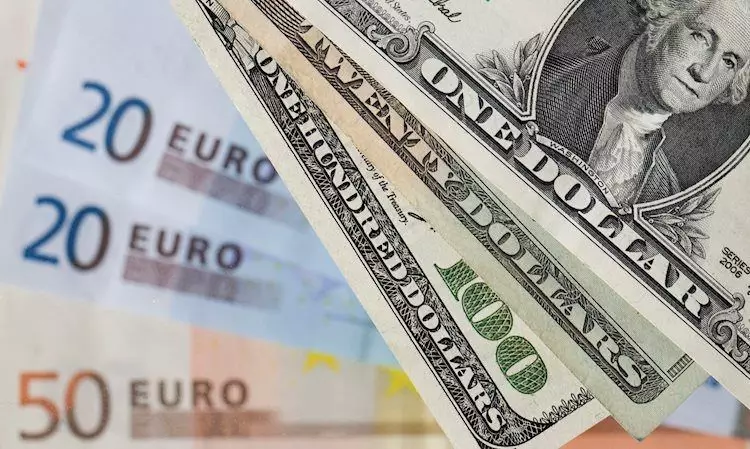The EUR/USD pair saw some upward movement, trading near 1.1080 in the early Asian session on Friday. This came after the US Gross Domestic Product (GDP) growth rate exceeded expectations in the second quarter, as reported by the Department of Commerce. The figure of 3.0% annual growth outperformed the forecast of 2.8%, signaling a strong economy and potentially reducing the likelihood of a larger rate cut by the Federal Reserve in September. This positive GDP data provided support for the US Dollar (USD) and limited the upside potential for the Euro (EUR).
Financial markets are now pricing in a 25 basis points (bps) rate cut by the Fed in September, with a 66% probability. However, the chance of a deeper rate cut of 50 bps has slightly decreased to 34% following the release of the US GDP data. These expectations impact the currency market, as investors adjust their positions based on the likelihood of interest rate changes. The market sentiment towards the USD and EUR can shift rapidly depending on economic indicators and central bank actions.
In contrast to the strong US GDP figures, inflation data from Germany and Spain showed a cooling trend in August. This has led to speculation that the European Central Bank (ECB) may consider lowering interest rates to stimulate the economy. ING’s global head of macroeconomics, Carsten Brzeski, highlighted the importance of slowing economic growth and decreasing inflation as favorable conditions for rate cuts. The ECB’s primary goal is to maintain price stability and keep inflation around 2%, using interest rate adjustments as a tool to achieve this objective.
ECB Monetary Policy Tools
The ECB has various monetary policy tools at its disposal, including Quantitative Easing (QE) and Quantitative Tightening (QT). QE involves the central bank purchasing assets like government bonds to inject liquidity into the financial system, which can lead to a weaker Euro. This policy tool was utilized during times of economic crisis, such as the Great Financial Crisis and the recent COVID-19 pandemic. On the other hand, QT is implemented when the economy is recovering, and inflation is rising. It involves the ECB reducing asset purchases and reinvestments, which can have a bullish effect on the Euro.
The interplay between economic data, central bank policies, and market expectations can have a significant impact on currency pairs like EUR/USD. The recent US GDP data, coupled with inflation trends in Europe, have influenced investor sentiment and trading patterns. As traders navigate through market uncertainties, staying informed about economic indicators and central bank actions is crucial for making informed trading decisions. The EUR/USD pair will likely continue to reflect changes in economic conditions and policy developments, shaping its future trajectory in the forex market.

